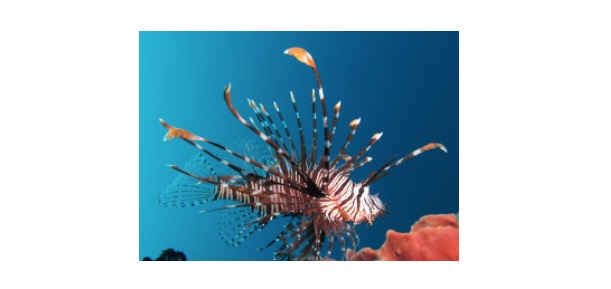Table of Contents
Monitor Lizard Definition
Monitor Lizard is a carnivorous reptile also called Nile Monster, that belongs to the genus Varanus and order Squamata.
What is Monitor Lizard?
Monitor Lizard is a large lizard comes under the family Varanidae that originated at 65mya. The genus comprises 79 species that are distributed in Oceania, Asia, and Africa. They are categorized as native species in America. These Lizard scales can be green, brown, tan, and grey. Their large bodies also comprise a powerful tail and long necks.
They have strong claws and well-developed limbs. Their tongues are forked as in snakes. The Komodo dragon is the largest existing lizard in their genus and they can grow up to 3 meters, while the smallest species grows up to only 20 cm.
They usually are terrestrial but others may be semi-aquatic or may be found on trees. They are aggressive and very territorial, they also lash out their tails when provoked. They also hiss and inflate their throats to intimidate their predators. They may be passively waiting for their prey or may go and actively hunt for them.
They feed on a range of organisms like birds, insects, fish, eggs, and small mammals. While some species eat vegetables and fruits. They are solitary organisms but in dire circumstances like in case if water is scarce they may form groups of 25.
They don’t have many natural predators but are hunted by humans for their skin and their meat. They were also sold as pets. Habitat fragmentation and destruction have led to the decline in the reptilian population. The more proximal they are to a human settlement the more vulnerable they are.
Notable Monitor Lizard Species
The Varanus komodoensis is commonly known as the Komodo Dragon after the place it is present. They are found in Indonesia on Komodo Islands and are the largest existing lizard that is also venomous. Their bite can release toxins that inhibit the clotting of blood and kills the prey slowly. Their prey includes cattle, deer, and pigs. They passively wait and ambush their prey.
Varanus salvator is known as the Asian water monitor that measures up to 2.7 meters in length. They commonly occur in Southeast Asia. They actively hunt and prey on a wide variety of animals by chasing, climbing, and swimming. They have also been reported to eat human corpses and carrion.
Varanus salvadorii is also referred to as the Crocodile Monitor and is found in mountainous regions and coastal regions on the New Guinea islands. These large aggressive species are poached for their skin and meat.
Varanus niloticus or the Nile monster is distributed across the Nile River and also in Sub-Saharan Africa. Their populations have also been reported from Florida, U.S where they were introduced from a sub-population in West Africa.
Varanus bengalensis generally known as the Bengal Monster is found distributed among the Indian sub-continent and other parts of Asia. These species are widely distributed as they are adaptable to a range of different habitats. They are commonly found in agricultural land.
Fun Facts About the Monitor Lizard!
This powerful large lizard is usually found in tropical areas across the world. Komodo Dragon is the largest existing species of this lizard family. Human interventions have to lead to their decline due to habitat destruction. They have adaptations that have helped them to survive for a long on Earth.
i. Parthenogenesis in Komodo Dragons
Komodo Dragons employ parthenogenesis to reproduce asexually. In the case of animal parthenogenesis, an unfertilized egg by this mechanism can give rise to an embryo. Usually in females in the process of gamete formation meiosis occurs giving rise to 4 progenitor cells. Out of these, one will become an egg and the rest are reabsorbed as nutrients.
In Komodo Dragon, if parthenogenesis occurs, then one of the extra progenitor cells mimics sperm and fuses with the egg to form a diploid egg. The genetic content of the progeny is the same as that of its mother’s, but it is not a clone as recombination occurs in the production of eggs.
ii. Megalania prisca
This giant monitor lizard was renamed Varanus priscus and is commonly found in woodlands, grasslands, and open forests of Australia and can grow up to 16 feet long and is much larger than Komodo Dragon. This extinct monitor lizard dates back to the Pleistocene era.
Their fossils have been found all over southern Australia, and the most recent fossil dated back to 50,000 years. This coincides with the arrival of Aboriginal inhabitants in Australia. It is speculated that humans might have driven them to extinction.
iii. Nile Monitor Breeding Methods
Monitor lizards are intelligent species that in captivity have even been taught to count to 6. For instance, the way Nile Monitor lizard cares for their eggs and incubates it shows how extremely intelligent they are.
During laying its egg, the female Nile Monitor dugs into a termite mound using its sharp claws. Termites will not only close this hole and thus providing a temperature-regulated nest for eggs. They are also the meals of the young reptiles once they hatch out.
These lizards also steal eggs from the Nile crocodile by working in groups. One will distract the female crocodile while the other will raid the eggs.
Monitor Lizard Citations
- Anticancer Properties of Asian Water Monitor Lizard (Varanus salvator), Python (Malayopython reticulatus) and Tortoise (Cuora kamaroma amboinensis). Anticancer Agents Med Chem . 2020;20(13):1558-1570.
- Gut Bacteria of Water Monitor Lizard ( Varanus salvator) Are a Potential Source of Antibacterial Compound(s). Antibiotics (Basel) . 2019 Sep 24;8(4):164.
- The earless monitor lizard Lanthanotus borneensis – A venomous animal? Toxicon . 2021 Jan 15;189:73-78.







